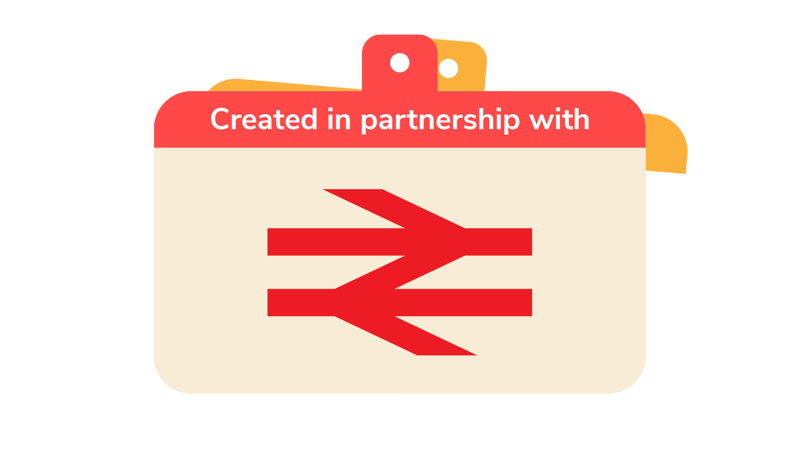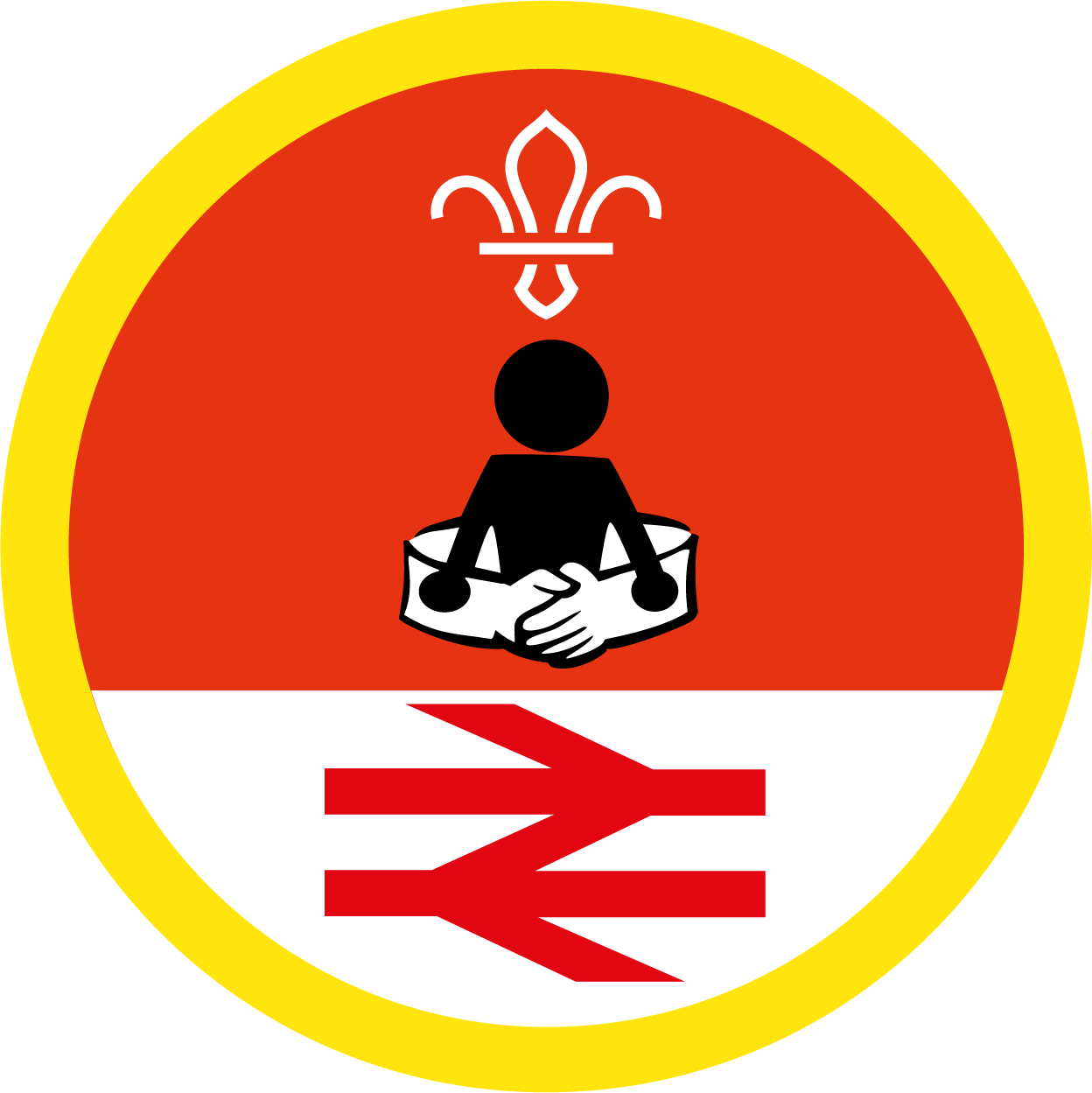
As quiet as a train
You’ll need
- Scrap paper
- Coloured pens or pencils
- Scarves (such as neckers)

You can’t outrun a train. And even if you could, you wouldn’t hear it coming. Today’s trains almost silently reach speeds of 125mph and they run 24 hours a day.
The Rail Industry
Before you begin
- This activity is for part of the first requirement of the Cubs Personal Safety Activity Badge. Everyone will need to learn about the dangers of playing on or near another of the things listed to meet the requirement. You could use Dangerous sculptures to do this.
- The Rail Industry has five key messages to keep people safe around railways. This activity focuses on ‘Trains are quiet, you can’t hear them coming’ and talks about how quickly trains run.
Understand speed
- Everyone should gather together, and the person leading the activity should give everyone a piece of scrap paper and a pen or pencil.
- The person leading the activity should read the key message from the box above. They should explain that this safety message comes from The Rail Industry. Everyone should talk about the message – was it surprising? How should people act around railways?
- The person leading the activity should remind everyone that trains can reach speeds of 125mph. Everyone should write down how fast they think people walk (on average) in miles per hour. They should also write down their best guesses for how fast a cyclist travels, how fast a car goes, how fast a cheetah can sprint, and how fast a plane is when it’s taking off.
- Once they’ve jotted down their answers, everyone should fold up their paper and pop it in their pocket (or at the side of the meeting place).
Play the game
- The person leading the activity should read the key message again.
- Everyone should spread out around the meeting space – no one should be close to anyone else.
- The person leading the activity should choose one person to be the train engine and one person to be the train conductor. Everyone else is a train carriage.
- The train conductor should put on a scarf like a blindfold. They should stand in the middle of the meeting place. When the game begins, they should listen out for the train engine. When they think they’ve heard the train engine, they should point to it. They can guess up to three times.
- The train engine should move so the train conductor doesn’t know where they’ll start from. When the game begins, they should move quickly but silently around the meeting place, tapping the train carriages on the shoulder.
- The person leading the game should count down from three, then say ‘go’ to start the game.
- The train engine should begin to collect carriages. When a carriage is tapped on the shoulder, they should join the back of the train, gently holding the shoulders of the engine or carriage in front of them.
- If the train conductor manages to point to the train engine, they win. If the train engine collects all of the carriages without being caught (or if the conductor runs out of guesses), they win.
- Everyone should play again with a different conductor and engine.
Put it all together
- Everyone should gather back together. The person leading the activity should ask if anyone was surprised by how tricky it was to listen for the train during the game. Everyone should chat about how, even when a train’s moving fast, they can be very quiet.
- Everyone should get the piece of paper they wrote their speed guesses on.
- Anyone who wants to could share some of their guesses, then the person leading the activity should reveal the answers one at a time.
- Everyone should chat about the answers. Were any surprising? Other than the plane, none of them were as fast as a train.
Reflection
Everyone should think back to the key message from Network Rail. Can anyone remember how fast travel? Is it 28mph (the running speed of Usain Bolt, the Jamaican sprinter who’s the fastest man in the world), 75mph (the speed a cheetah, the fastest land mammal, runs), or 125mph (almost double the speed limit of a motorway)?
When do trains travel? Only at night, only during the day, or all the time – 24 hours a day? Is it true that trains can move silently?
Why is it important to be safe, sensible, and alert at train stations and level crossings? Trains can move quickly and quietly (or even silently) so it’s important to keep people safe. What made it trickier for the conductor to hear the engine?
Safety
All activities must be safely managed. You must complete a thorough risk assessment and take appropriate steps to reduce risk. Use the safety checklist to help you plan and risk assess your activity. Always get approval for the activity, and have suitable supervision and an InTouch process.
- Active games
The game area should be free of hazards. Explain the rules of the game clearly and have a clear way to communicate that the game must stop when needed. Take a look at our guidance on running active games safely.
- Contact games and activities
Make sure everyone understands what contact is acceptable, and monitor contact throughout the activity.
- Increase the competition by giving points for how many carriages the engine collects before they’re caught, and how quickly the train conductor finds the engine. The engine will have to balance speed and silence, and the conductor will have to think on their feet and make quick decisions without using all of their guesses!
- It’s up to you how many distractions you add – in the real world, there might be noises like traffic, the wind moving through trees, or even people talking. Afterwards, chat about how it’s especially important to pay attention to surroundings near the railway.
If anyone doesn’t want to be blindfolded, they could close their eyes or use their hands instead. If people don’t want to hold on to each other’s shoulders, they could hold hands, just walk close together, or hold pieces of rope to link each other together.
All Scout activities should be inclusive and accessible.
Why not arrange a visit to a local train station? Contact them in advance to arrange a suitable time to visit – staff might be able to give you a tour, chat to everyone, or answer their burning questions.


